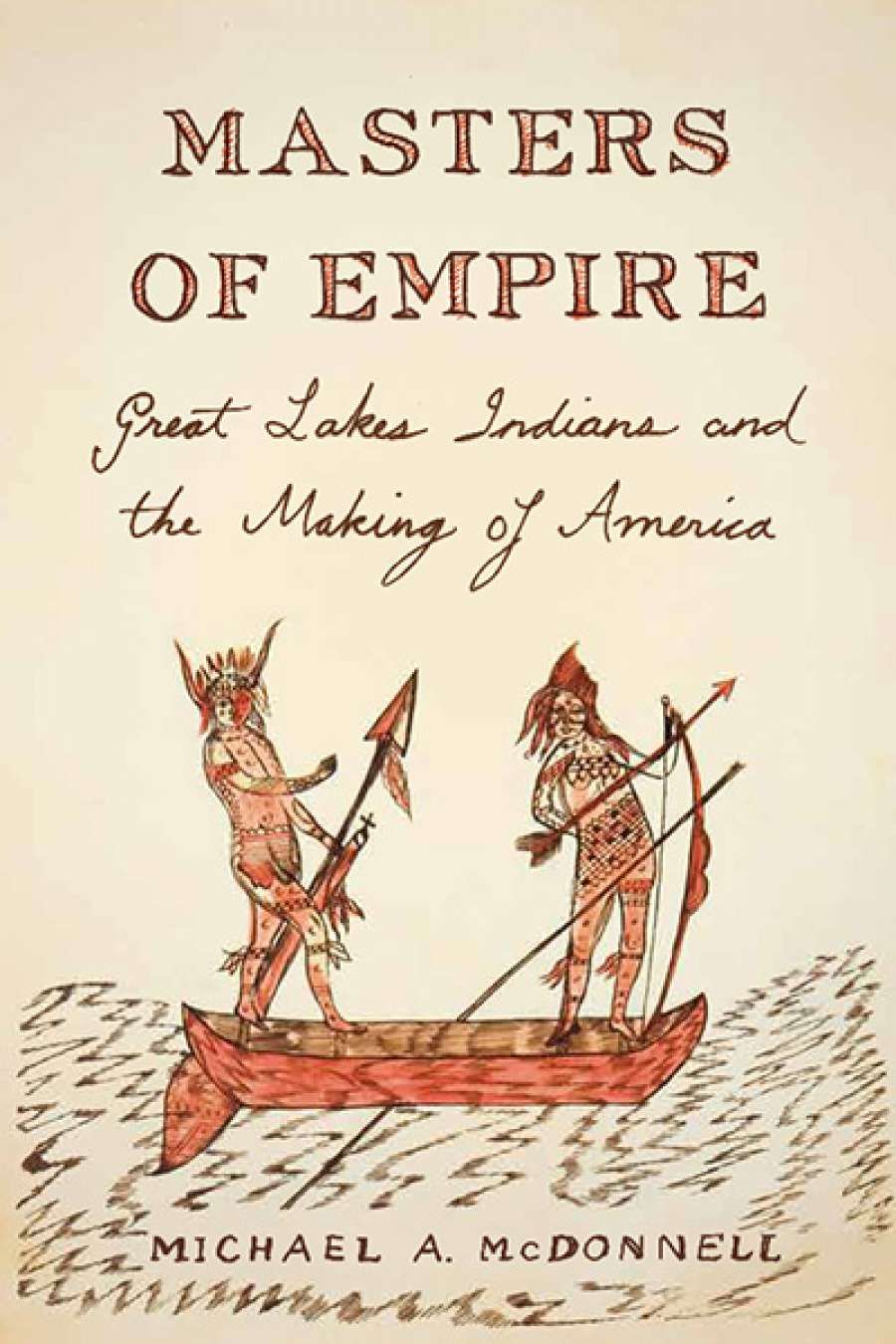
- Free Article: No
- Contents Category: United States
- Custom Article Title: Glenn Moore reviews 'Masters of Empire: Great Lakes Indians and the making of America' by Michael A. McDonnell
- Review Article: Yes
- Online Only: No
- Book 1 Title: Masters of Empire
- Book 1 Subtitle: Great Lakes Indians and the Making of America
- Book 1 Biblio: St Martin’s Press $49.99 hb, 416 pp, 9780809029532
For all his achievements, Langlade was not a particularly likeable man. Angry at being slighted by a Miami chief, he boiled and ate the man in front of his family. He married an Odawa woman, but four years later, when he decided that an Indian wife could not advance his career any further, he left her and married the daughter of a wealthy French trader.
Biography does not need to be sympathetic to be successful, but McDonnell had other reasons for giving the book a broader focus. As he delved deeper, he realised that Langlade's success and his ability to shape events depended less on his own initiative and more on his Anishinaabeg kinship network. As he notes, 'Langlade's actions were explicable only in light of a complex set of Indian politics.' Consequently, Langlade's story became the story of the Anishinaabeg.
 Anishinaabeg harvesting wild rice on a Minnesotan lake in 1905 (photo courtesy of Minnesota Historical Society, via Wikimedia Commons)
Anishinaabeg harvesting wild rice on a Minnesotan lake in 1905 (photo courtesy of Minnesota Historical Society, via Wikimedia Commons)
The result is a book that reveals the sophistication of Great Lakes Indian society, whose subtleties challenged and baffled Europeans. One small but telling example is the way the Anishinaabeg family structure forced European traders to rethink their gender assumptions. To maximise profit, fur traders loaded their canoes with tradable goods. They carried the bare minimum of provisions, but while they could trade with Anishinaabeg men for furs they quickly discovered that the women grew the corn they needed to survive. Moreover, if their canoes needed repairs, it was the Anishinaabeg women to whom they had to turn. Even though official French records rarely mention these women, we know of their importance from traders' inventories: kettles, combs, mirrors, and cloth were hardly aimed at warrior–hunter men.
Indian kinship networks overlapped with a complex web of political, military, and trade alliances. Pragmatically, Europeans were forced to deal with these economic and political realities, but the same cultural blinkers that made them blind to the power of Anishinaabeg women meant that Indian nations were not formally recognised. Historians fell into step, and the Anishinaabeg 'appeared only at the edges of European and American histories, shadowy figures on the frontier'. It is here that McDonnell's decision not to write a biography becomes important. As he explains, 'For too long now the history of the Anishinaabeg of the Great Lakes has been hidden behind Euro-American stories – perhaps typified by the image of Langlade himself as a "white" settler.' By augmenting the official records with Anishinaabeg accounts, he has written a book in which the Indian story is central, and a world where Indians had power and agency is revealed. It is this that has historians excited.
The historiography of Native American history – McDonnell prefers the term 'Indian' – follows a predictable trajectory. Early scholarly histories, written in the nineteenth century, portrayed Indians as savage obstacles to progress. With the end of the frontier in 1890 and the defeat of the Apache, a more sympathetic history emerged in which Indians were victims of modernisation and greed. By the 1960s, historians like Dee Brown added stories of resistance, but they were still trapped in a metanarrative of Indians reacting defensively to white aggression. Richard White added complexity with his book The Middle Ground (1991), where he argued there were periods in which neither European nor Indian held sway, and where a hybrid culture emerged.
 The Middle Ground by Richard White (1990, Cambridge University Press)McDonnell goes a step further. The Great Lakes region, he argues, was not neutral, negotiated territory – it was controlled by the Anishinaabeg, and the French and British were there because the Anishinaabeg wanted them there. He does not claim that this was typical of colonial North America. As he concedes, the Iroquois, Shawnee, and Cherokee did not fare so well. But he is able to claim that the Anishinaabeg grip on the Great Lakes region was firm enough to force the British to make concessions and pay tribute, compelling them to tax the colonists and triggering the American Revolution. It is hard not to think that McDonnell has overstated his case here, but books that ask us to rethink the accepted wisdom on a subject are always going to be contentious. McDonnell's Masters of Empire is a meticulously researched book that will stimulate debate in university classrooms here and in America.
The Middle Ground by Richard White (1990, Cambridge University Press)McDonnell goes a step further. The Great Lakes region, he argues, was not neutral, negotiated territory – it was controlled by the Anishinaabeg, and the French and British were there because the Anishinaabeg wanted them there. He does not claim that this was typical of colonial North America. As he concedes, the Iroquois, Shawnee, and Cherokee did not fare so well. But he is able to claim that the Anishinaabeg grip on the Great Lakes region was firm enough to force the British to make concessions and pay tribute, compelling them to tax the colonists and triggering the American Revolution. It is hard not to think that McDonnell has overstated his case here, but books that ask us to rethink the accepted wisdom on a subject are always going to be contentious. McDonnell's Masters of Empire is a meticulously researched book that will stimulate debate in university classrooms here and in America.


Comments powered by CComment